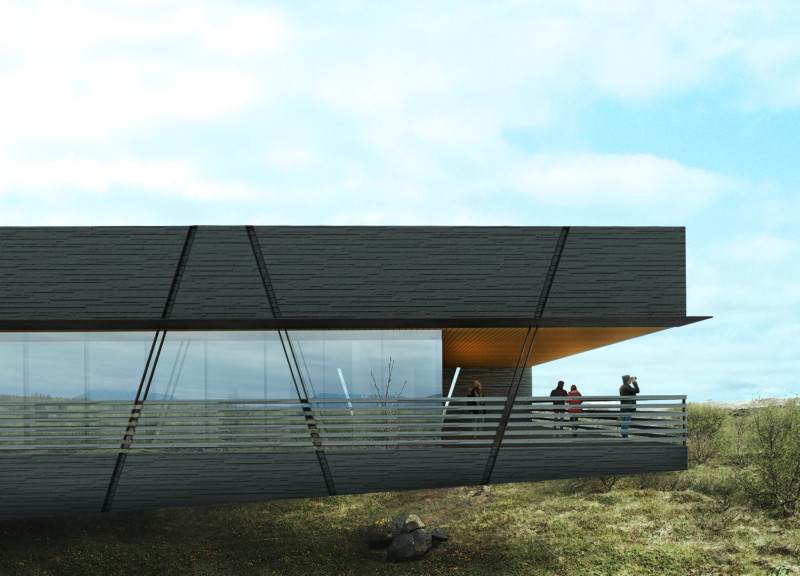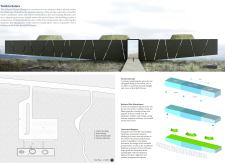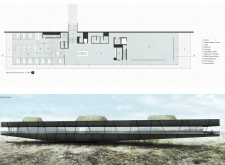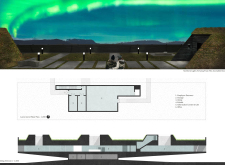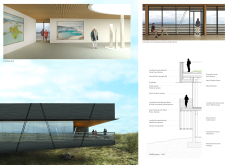5 key facts about this project
At its core, the museum embodies a statement about the relationship between architecture and nature. It functions as a hub for both educational and recreational activities, accommodating a variety of programs, including exhibitions, interactive displays, and communal spaces. The careful consideration of spatial organization ensures that visitors are not just passive observers but are actively engaged in learning about the geological phenomena that define the area.
One of the standout features of the Iceland Volcano Museum is its strategic alignment along an East-West axis, which allows for optimal exposure to natural light while framing panoramic views of the Hverfjall Volcano. This alignment not only enhances the aesthetic appeal of the museum but also ensures that the experience of exploration is enriched by the breathtaking scenery that surrounds it. Visitors are welcomed into a grand promenade that leads into the main exhibition space, thoughtfully illuminating the journey within the museum.
Materiality plays a crucial role in the architectural design of the museum. The use of locally harvested basalt stone panels is particularly significant, as it establishes a direct link to Iceland's volcanic heritage. This choice of material not only blends harmoniously with the landscape but also serves as a tactile reminder of the region's geological character. Complementing the basalt is wood stud framing that provides warmth to the interior spaces, promoting a sense of comfort and accessibility for all visitors. The incorporation of triple-glazed windows further illustrates a commitment to sustainable design by enhancing energy efficiency while providing ample views of the environment.
The architectural layout includes various functional areas, such as exhibition halls, a café, information centers, and administrative offices. Each space is designed to facilitate movement and interaction among visitors, ensuring a connection to the underlying theme of the museum. The museum’s structure is elevated slightly above the terrain, which minimizes its impact on the natural landscape and encourages a sense of arrival as visitors approach.
In addition, the design features a rooftop area specifically dedicated to observation, allowing guests to experience the Northern Lights in a unique setting. This element not only enhances the user experience but also reinforces the museum's mission to celebrate and engage with the natural phenomena of Iceland. By strategically positioning communal spaces and incorporating outdoor areas, the museum fosters social interactions, further enriching the experience for all who visit.
Unique design approaches spotlight the thoughtful integration of the surrounding landscape into the project. The architecture appears to resonate with the forms and textures found in nature, reflecting an architectural philosophy rooted in sustainability and respect for the environment. The choice of a green roof system harmonizes the structure with its setting while promoting biodiversity and energy efficiency.
This architectural endeavor is indicative of a broader trend within contemporary design to prioritize ecological sensitivity and community engagement. By bridging the gap between natural beauty and human-centered design, the Iceland Volcano Museum succeeds in creating a space that not only educates but also inspires visitors to appreciate the geological marvels of the region.
For those interested in delving deeper into the intricacies of the project, exploring architectural plans, sections, and design specifics can provide further insights. Attending to architectural designs and ideas within this context can enrich the understanding of the museum's unique relationship with its environment, making it a valuable case study in modern architecture and natural integration.


